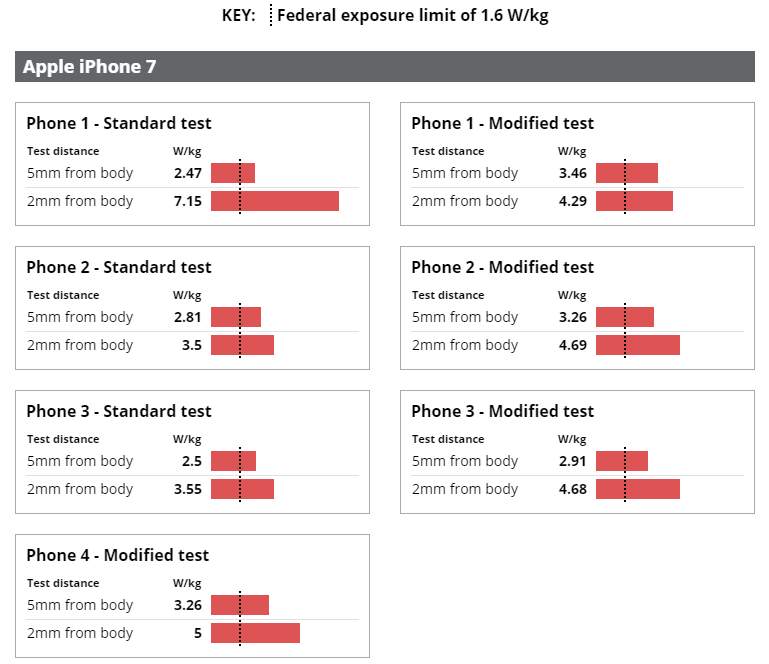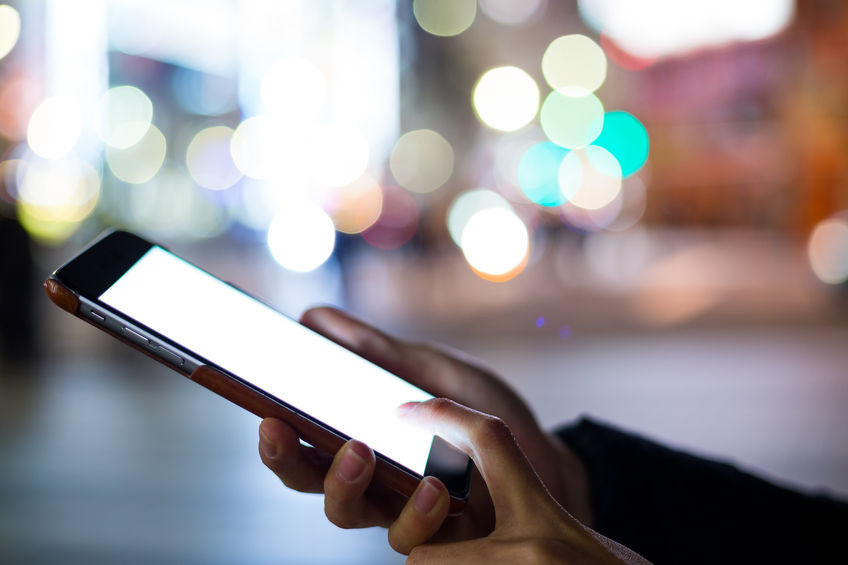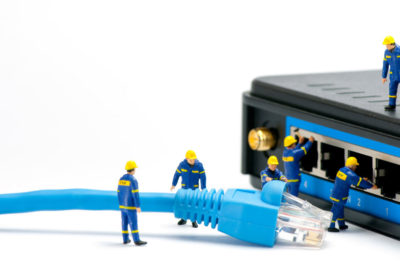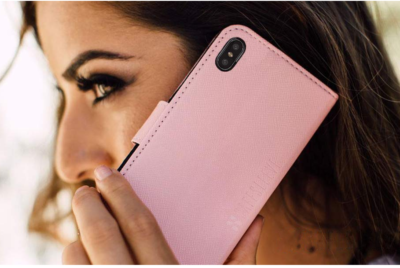Apple is very generous when it comes to sharing copious amounts of information about all the benefits of owning an iPhone 11 – all the apps and bells and whistles you’ll have access to once you upgrade. But when it comes to warning you about the hazards that are part and parcel of owning one, the phone maker is apt to be downright stingy. But to give credit where credit’s due, or to paraphrase that, to give demerits where demerits are do, neither do any of the Android companies. So, if you’re concerned about the ill effects, you’re left to do your own research which is probably how you found your way to this article about iPhone 11 radiation.
If you have already dug into the numbers and are alarmed at the levels of radiofrequency radiation (RF) emitted by smartphones, be prepared to be even more alarmed because they miss their mark. But you can take heart in that you are not the only one with concerns.
FCC, WHO, and NIH Concerns
Due to the health effects of high levels of radiofrequency radiation exposure, the Federal Communications Commission (FCC) has drawn the line between acceptable and unacceptable at 1.6 watts per kilogram of body weight. Known as the Specific Absorption Rate (SAR), this value reflects the amount of radiofrequency energy that the body absorbs. And as the levels of public concern rise in relation to the SAR rates that result from frequent iPhone usage, many researchers are now looking into the health effects that result from cell phone radiation. And by the way, they come with Androids too.
Current findings indicate that phone usage is linked to:
- Headaches
- Insomnia
- Memory and learning difficulties
- Behavior problems
- Reduced sperm count
And while long-term research into whether excessive RF levels can be definitively linked to the rising number of cancer diagnoses has not yet been concluded, the World Health Organization has classified RF radiation as a possible carcinogen due to the coincidence of smartphone usage with increased risk of glioma – a malignant type of brain cancer. Because of these findings, the WHO has given radiofrequency radiation a 2B classification which indicates that although the evidence of carcinogenic properties to certain degree is limited, the usage is worth monitoring.
And last but not least, the National Institutes of Health has found clear evidence linking exposure to RF radiation to cancer in animals.
Startling iPhone 11 Radiation Emissions
Remember that RF emission threshold of 1.6 watts per kilogram the FCC set? Well, according to Popular Mechanics, testing carried out by RF Labs, an independent research lab in San Marcos, California determined that the iPhone 11 exposes users to a SAR of 3.8 watts per kilogram, nearly three times the limit.
If you’re asking yourself how the FCC can allow this, it’s because it allows self-regulation. The commission may have set the limits, but it doesn’t enforce them. It leaves it up to each smartphone maker to submit its phones to a testing lab of its own choosing, and if the lab says the SAR is within limits, the FCC rubberstamps the results and okays the phone for release.
The iPhone 11 model, however, is not the first iPhone model to measure over the legal safety limit. Even its predecessors were found to have unsafe levels of RF radiation. Following concerns with cellphone manufactures’ reported radiation levels to the public, in 2019 Chicago Tribune has led an independent investigation into radiation levels of 11 smartphone models including 4 iPhone models. Most tested models and all iPhone models exceeded legal safety limits. iPhone 7 radiation levels measured more than double to manufacturer’s reported levels to FCC.

The Problem of Old Tests and New Phones
However, as things stand today, no one’s phone would pass the original testing process. Those protocols were developed close to 25 years ago which, in terms of technology, is akin to a lifetime. And as far as phones are concerned, an era when flip phones were the new kids on the block; a time when the smartphones of today weren’t even an idea in the minds of developers. The obvious solution would be for the FCC to update its guidelines to bring them in line with today’s iPhones and Androids. This would force developers to come out with ones safer to use.
They might start by looking at the way people actually use their phones. Today’s users are much closer to their phones. Literally. Those tests of old didn’t foresee how phones would become practically an article of clothing. They conducted the tests at a distance of five millimeters from the body, whereas if you carry your phone in your pocket, odds are it’s only two millimeters away. This, in itself, makes the testing inaccurate. But rather than wait for the FCC to revise how they look at smartphones, the smarter thing to do is to take protective steps of your own.
iPhone 11 Radiation Safety Tips
1. How Close Are You and Your Phone?
Rather than placing the phone on your ear, you might want to purchase a good pair of corded earphones (not wireless earbuds!) or, ideally, if privacy is not an issue, use the speakerphone setting. And when it comes to texting, you might want to place that phone on a flat surface in front of you when typing.
And find another place to carry your phone other than your pocket. Women who regularly carry a purse do so anyway, finding it easier to tuck it into an easy to reach compartment where they can easily access it. Men might want to consider carrying a backpack.
2. Don’t Forget Your Phone is Mobile
If you are in a low service area as evidenced by the number of bars on your screen, your phone will try to find better reception, and this will increase the amount of radiation it is emitting. Remember you’re not attached to that spot. Do yourself and your phone a favor, move to a place with better reception.
3. Other DIY Steps to Reduce RF radiation exposure
- Get a protective case that has a front flap with an EMF shield built into it so that after you initiate or receive a call, you can flip it down and talk through it. Some of these cases provide close to 100% RF reduction.
- Use airplane mode when not talking or texting. Smartphones emit a lot of energy just by trying to maintain a connection. By switching it to airplane mode setting, you will be giving it a rest and doing yourself a favor too.
- Do not use your phone in your car. Since the vehicle is largely metal, it will magnify the radiation coming from your phone, increasing the amount your body will absorb. Plus, as you drive around, the phone will be on the constant search for a cellphone tower with a strong signal. This continual scanning increases both its consumption of power and its emission of radiation.
- Don’t call, text. Texting exposes you to substantially less radiation than a phone conversation would, especially if don’t use a headset. Plus, you’d be on and off the phone much quicker.
- Make sure you close your apps after using them. Apps left to run in the background receive updates and as they do, they use more radio frequencies, thus receiving more RF radiation to pass on to you.
As Things Stand Today
The obvious answer would be to solely use corded landline phones but that’s unlikely to happen due to the popularity of and conveniences offered by smartphones like the iPhone 11. In fact, households even having a landline are rapidly falling into the minority.
If a survey taken by the National Center for Health Statistics presents an accurate picture, 50.8% of American Households no longer have landline phones. And that survey was carried out in 2016. Perhaps even more telling, the survey found that 70% of those between 25 and 34 year were wireless only. So, the ubiquity of the smartphone is unlikely to change. What can be changed however is how you use your iPhone 11.




